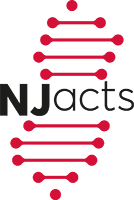New findings published in the journal Nature Neuroscience have shed light on a mysterious pathway between the reward center of the brain that is key to how we form habits, known as the basal ganglia, and another anatomically distinct region where nearly three-quarters of the brain’s neurons reside and assist in motor learning, known as the cerebellum. Researchers say the connection between the two regions potentially changes our fundamental view of how the brain processes voluntary movements and conditioned learning and may lend fresh insight into the neural mechanisms underlying addiction and neurodegenerative diseases like Parkinson’s. To read the full story.
